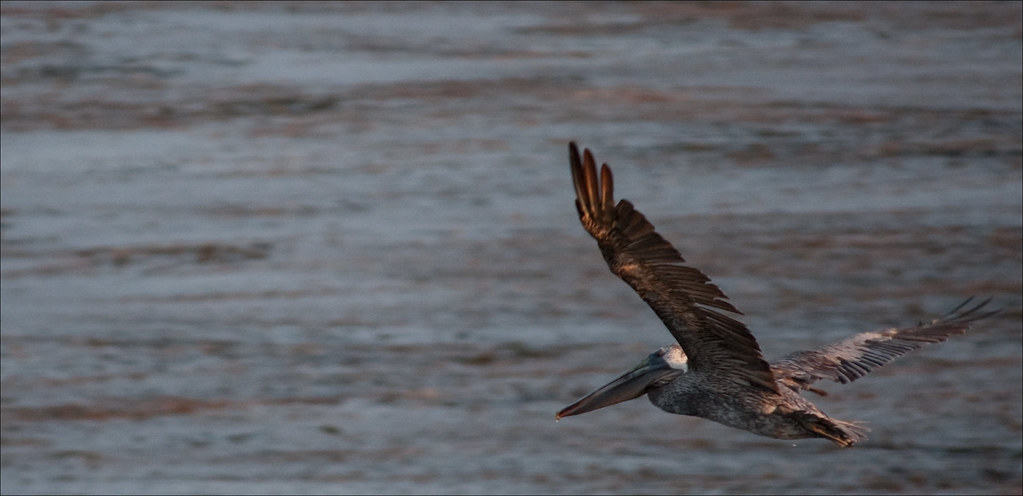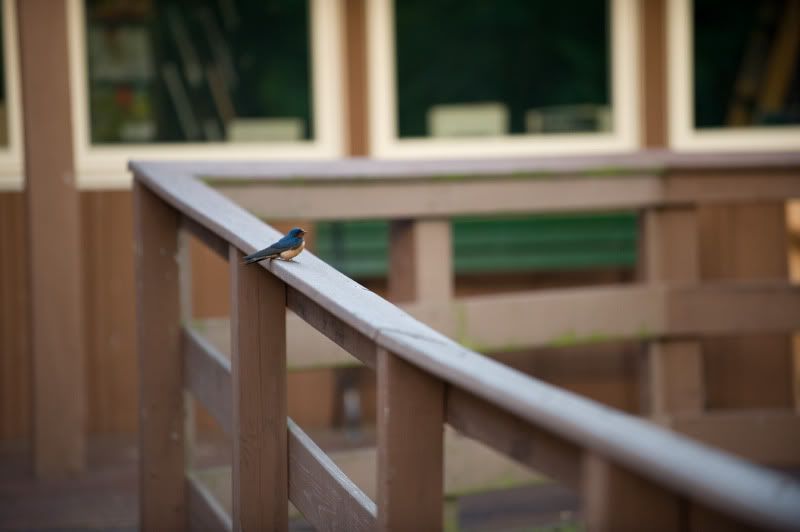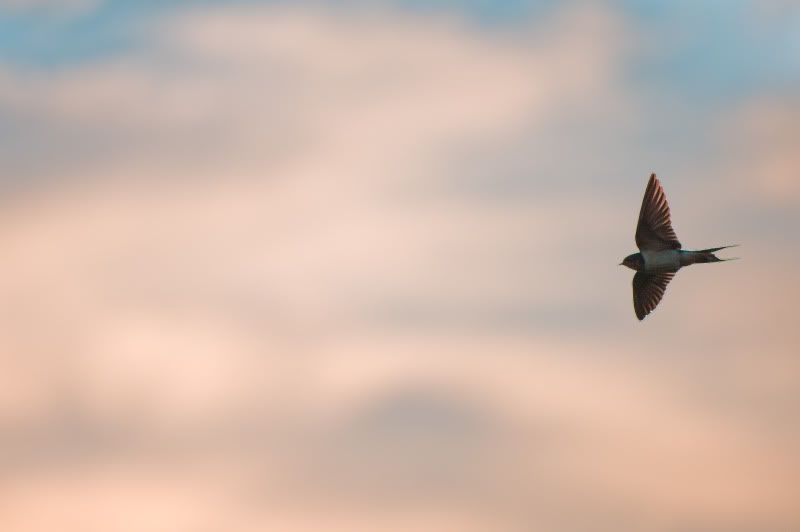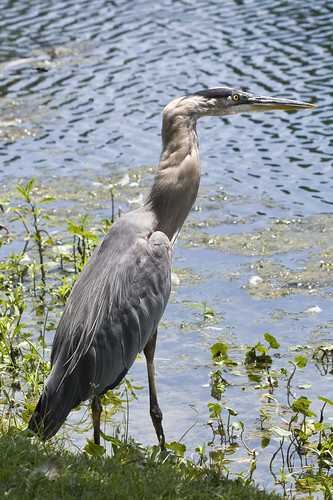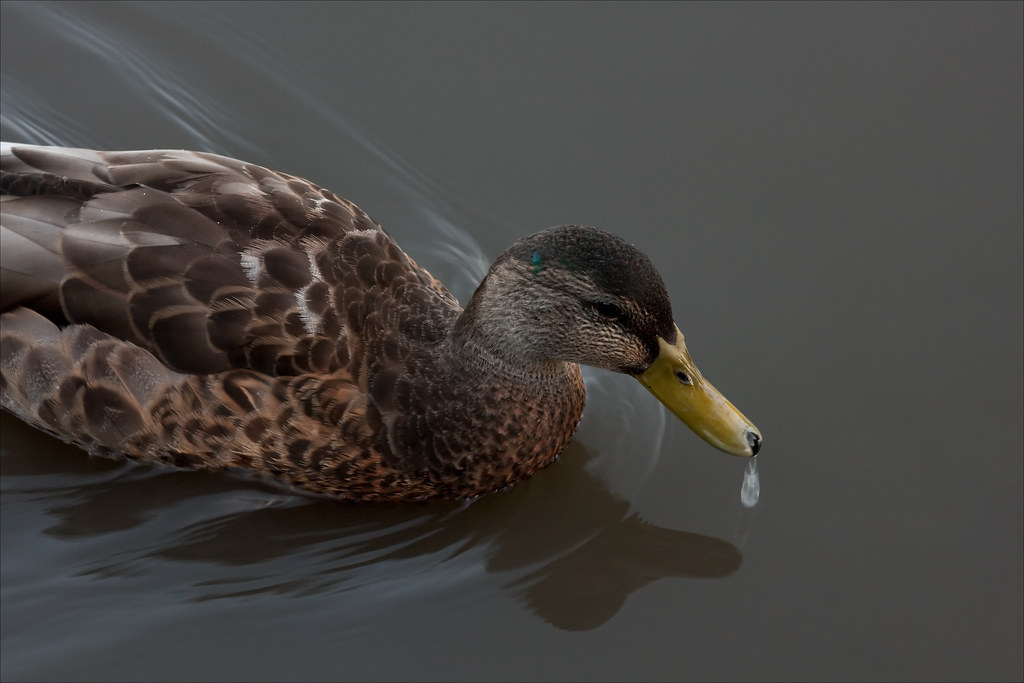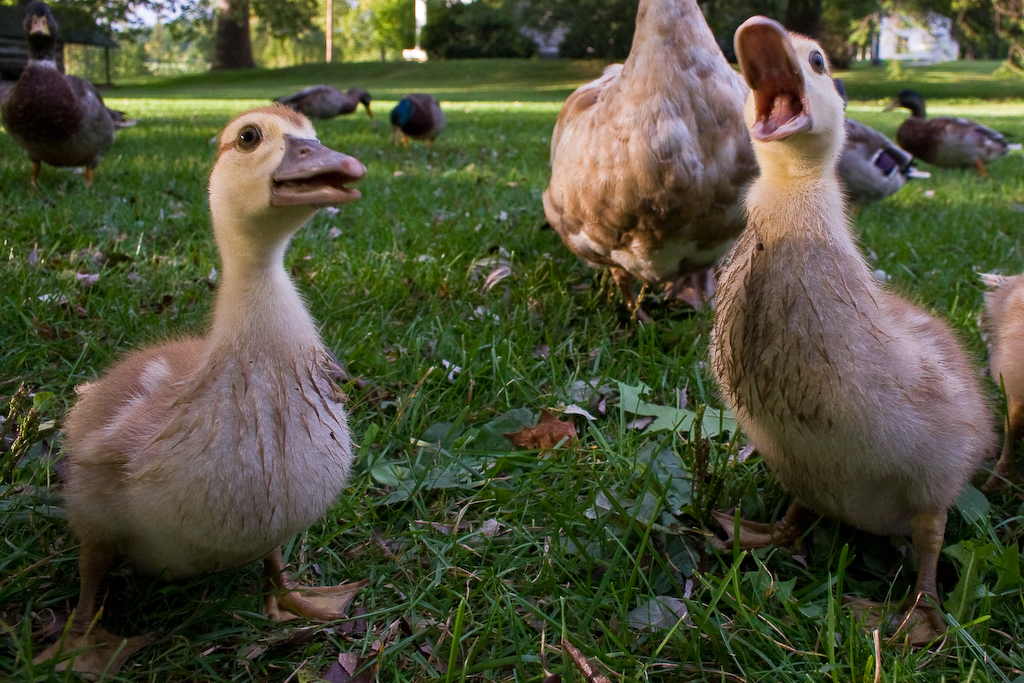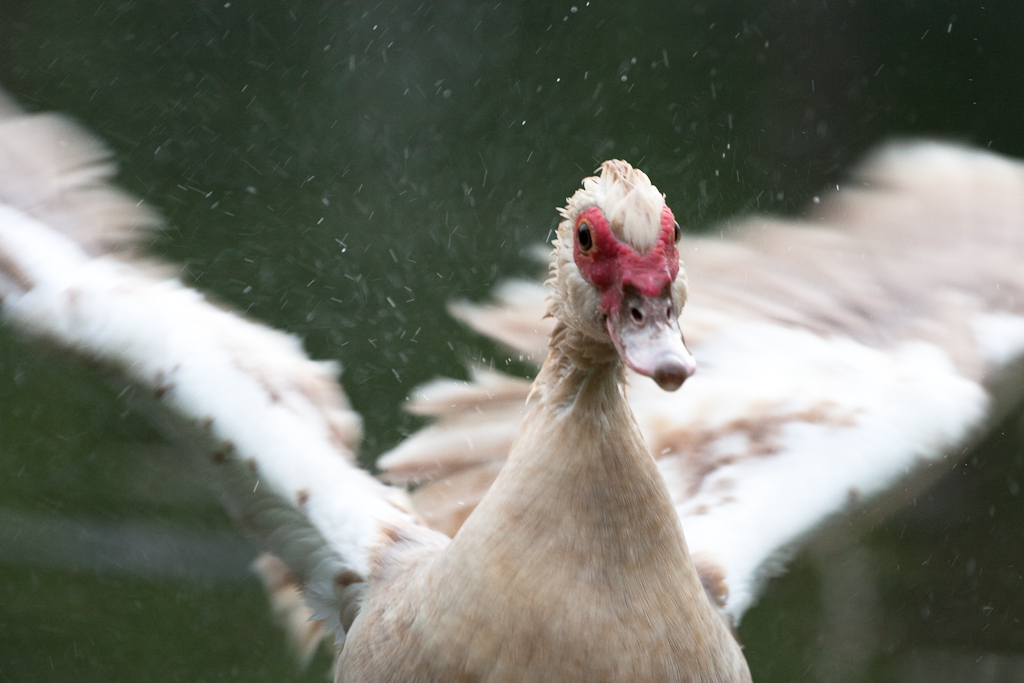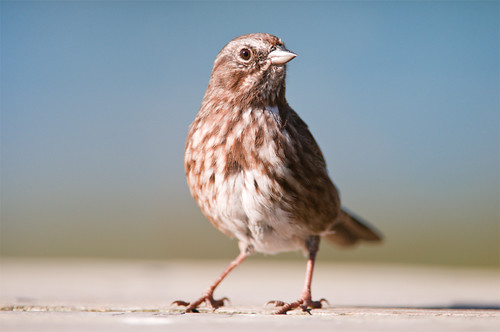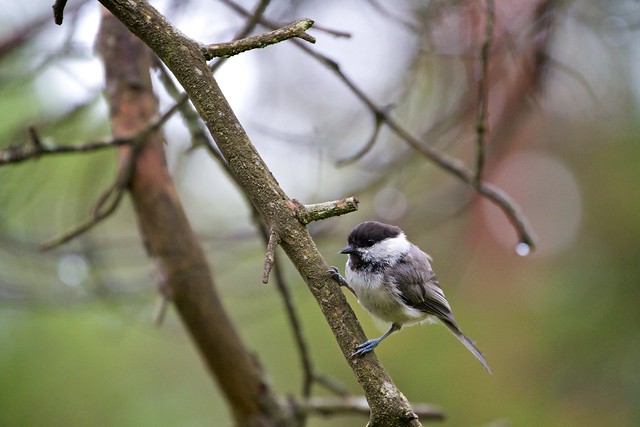|
Before writing anything else, I wish to state the following: I only got into bird photography around 3 months ago (though photography has been in my blood for 15 years by now), and while I feel I have acquired some knowledge worth sharing, take that into account when reading the following. If you disagree with anything I say, feel free to post something to that accord. What I do NOT want this thread to turn into is some big argument/dickwaving over what gear is best yada yada. Nor do I want "proof" that my lens recommendation is wrong because you managed to get a killer bird shot with a 50mm on a Leica rangefinder. This is for all of us to share knowledge. So let's kick it off. 400/5.6, 50D 1. Gear One of the most frequently asked questions is what type of gear you really need to get into birding. While it's certainly possible--and has been done--to get killer wildlife shots with anything from a 300D with a kit lens to a 1D III with a 1200mm f/5.6 (currently selling used for a cool $120,000 at B&H), there's a range of gear that is fairly well suited for this type of photography and won't necessarily require you to mortgage the house or eat Ramen until retirement. 1a. The body I highly prefer a decent crop sensor body. Why? Well, it's a good way to get a high pixel density, and when cropping (which you will have to) pixel density is king. Let's say you are shooting at 400mm with a 20D (cheap old body) and the same on a 1Ds Mark III. Let's also say the subject is so small it doesn't fill the frame on the 20D (you will find this to be the case far too often!). Once you cut down the (significantly larger field of view) 1Ds Mark III image to the same crop as the 20D you have... the same number of pixels. Because of the infamous "crop factor", a full frame camera would need 2.56x as many pixels to get the same pixel density as a 1.6x crop camera. Sure, you can throw a 600/4 on the 1Ds III to make up for it, but then again you could throw the same lens on the 20D and well, you get the idea. Not saying that FF doesn't have its significant advantages, but there's a good argument for sticking with crop here. To match the pixel density of my 50D I would need something like a 39 megapixel full frame camera. You also want a body that has good autofocus performance. Luckily, most recent DSLR bodies do. While I have much love for Pentax, this is one area where I feel they fall short (and I have owned a K20D), so could not really recommend them here. If you already have one, by all means, use it, but it wouldn't be my choice of weapon for fast moving subjects. The rest, well, high ISO performance is good when you are shooting slow-ish lenses in so-so light. But any half decent semi recent crop body should suffice for making good shots. I've gotten a lot of nice flight shots with a 20D that cost me something like $250. 1b. The lens Here's where you can't just pick up any old thing and go to town. Sure, people have gotten some killer shots from a 70-200/4 or even shorter, but those are exceptions. You are looking for three things here: length, speed, and autofocus performance. The below is highly Canon-specific; please contribute with your thoughts and experiences in other mounts/brands. Length, I would recommend no less than 400mm. Some people have gotten decent results with 300mm lenses but that's pushing it a bit. Excluding the zooms, things get pretty loving expensive past 400mm. Speed, well, I shoot mainly a f/5.6 lens. Price becomes a real issue here; Canon's 400/5.6 can be had for $900 or so used while you're looking at several times that to get the 400/4 which buys you a single stop of speed. Autofocus performance. You are looking for two things here in my opinion: speed, and the ability to engage a focus limiter. The former is self explanatory, the latter means that you can tell the lens not to attempt to focus closer than X meter/feet. This helps tremendously when you are shooting subjects against low contrast backgrounds (e.g. blue sky) where the lens might "hunt" significantly when losing the target. Believe me, it's not fun waiting for a Sigma 50-500 to rack in and out. Your bird will be long gone by the time it's done. So what lenses are worth looking at? Well, I am coming from a very Canon centric view point, so will focus (hurr) on that. The Sigma "Bigma" 50-500 is a very nice piece of glass for the money. The focusing is fast, and if you stop it down just a tad (f/8 at 500) it gets quite sharp. It is big, heavy, lacks a focus limiter, and the twist-zoom mechanism is a little unwieldy, but it's a hell of a lot of glass and reach. I had one, and sold it for... the Canon 400/5.6. And I tell you, this is one amazing lens. Tack sharp wide open, and the autofocus is insanely fast. The thing just zips everywhere. It also has a focus limiter switch. What it does NOT have is IS, which the Canon 100-400 does. The 100-400 zooms (which can be handy), has IS, but it is not quite as sharp and not nearly as fast autofocusing as the 400/5.6. Still, a lot of people use it successfully even for flight shots. One other lens I have not used but have heard a lot of positive things about is the (I believe discontinued) Sigma 400/5.6. Please note that Sigma quality control is a little spotty, so it's best to try out a particular lens before buying it, or buy from a place with a good return policy (e.g. KEH or Adorama). Should you want a longer prime than 400, or better performance than the zooms, you have to fork out a lot of money. I looked at the cost of a 500mm for my 1Ds II vs the cost of a 50D, and decided I'd rather get a 50D to use with my 400. Weight does become an issue when you shoot hand held a lot, so bigger isn't always better. 1c. The thing that you put under things that go on top of other things (tripod and head) I really don't have much to say here since I shoot handheld 99% of the time. For long teles you want a gimbal style mount where the lens/camera is balanced and doesn't attempt to tip over in any direction. The Bogen 393 is the cheapest option by far at around $180. A serious Wimberley type setup will cost you several times that. This does not include the tripod legs. You do not want ball heads for any longer/heavier gear. Bad, bad, bad. 1d. Summary Get a crop body and the best/longest lens you can afford. My budget suggestion would be a 20D + Sigma 50-500 which you can get for < $1k these days. My slightly nicer setup would be a 50D with either 400/5.6 or 100-400. I don't know enough about non-Canon gear to make any good suggestions here, sorry! 2. Technique.  400/5.6, 50D 2a. Things that move. This is the crown jewel if you ask me. Birds in flight are a huge challenge for photographers, and a ton of fun to shoot. The key here is shutter speed. To really capture a nice, crisp shot of a flying bird, you want to be at no less than 1/1250 second. I in fact prefer 1/1600 or above. Panning at slower speeds seems like a good idea, but those types of shots generally don't come out all that well. Push the ISO as high as you need; you are far better off with a sharp ISO 3200 shot than a blurred to hell ISO 800 shot. Birds in flight are generally a bitch to meter. Your camera will be confused to hell and back between white bird / blue sky, black bird / white sky, purple bird / green foliage etc etc. If you are shooting in fairly consistent light, do yourself a favor and stick to manual mode. Meter off something average in manual mode, snap a few test shots, and tweak the shutter speed / aperture / ISO as needed to keep things in line. I do 90% of my shooting in manual mode, and only revert to aperture priority when the light is constantly changing. Exposing to the right is tempting, but it just takes a small change of light or in the reflection off a bird's feathers to gently caress that approach up, so try and keep the exposure ball park in the middle. Tracking. Your camera likely has some sort of tracking mode (called Servo on Canon) where it attempts to track the subject continuously. You will want to use this. I prefer to use the center focusing point since I don't like to rely on the camera to make decisions for me. Exceptions are when the birds might change direction very quickly, and then it may be advisable to engage all AF points and hope the camera figures things out right. When using the center point try to keep the head/eyes under it -- you might not end up with the ideal composition/framing, but can crop later. Most bird shots seem to lack something if you don't get the eye sharp. Get that part right and the rest mostly sorts itself out. When starting out, I recommend starting to track the bird in your viewfinder even when it's WAY far way. Once it gets close things start moving really fast and you might be waving your lens all over the place trying to find that drat tern only to find it zipping past you before you do. After a while you get pretty good at aiming the lens properly and can center a bird in the viewfinder with little effort. But do practice; with a longer lens you are viewing a very small portion of the sky and you need to get it right! If your camera allows for it, my personal preference is to move the auto focus function to a button separate from the shutter. Not saying you can't leave things as they are, but I've found it to work better for my shooting. I generally leave my cameras in Servo (tracking/continuous mode) and if I want to focus/recompose for some reason I just tap the rear button to focus, then I can recompose and fiddle with things without the shutter button screwing it up. Getting the right angle/light will be covered in the next post.  400/5.6, 20D 2b. Things that don't move much. Might not seem as exciting, but shooting birds NOT flying can be fun and challenging too. Here you can choose whatever autofocus mode you are comfortable with; I still use my cameras in Servo mode but there's really no reason you can't use single shot. The main thing here--other than getting close enough, to be covered in the next part--is getting a nice, sharp shot. Seems easy enough, but when the bird is shoved up in a tree in shadow and all you have is a long f/5.6 lens, well, things get hairy. What I have found to be useful when shooting long glass hand held is to a) push the camera against your face (to sort of anchor it), b) hold the lens with your left hand near the end/hood, and c) fire bursts if your equipment allows for it. The last point I've found particularly useful; if you do your best and fire off a handful of frames chances are you manage to be fairly still and unmoving in one of them. I can often get nice results at 1/160 to 1/200 with a 400mm lens this way, with no image stabilization available. Exposure, here you can use Av mode (my preference) with the appropriate exposure compensation (EC). I wish I had a recipe to give you for when to use EC and how much, but it comes down to experience. Remember that your camera generally tries to make things "average" for you so if your subject is unusually bright or unusually dark things get thrown off a bit. Play with EC on something like a white foam cooler or dark rock or whatnot filling anything from small part to almost all of the frame to get a feel for what your particular camera "thinks" and you will get a pretty good idea of what to use and when. And again, don't fret over noise and use a higher ISO when you need to. Noise Ninja and Neat Image can mostly fix noise issues, but they won't do much about an image blurred due to too slow a shutter speed. ----------------------------------------------- OK, I am done with part 1 (the mechanics). Part 2+ will focus on how you go about figuring out where, when and how to shoot, how to deal with not being able to control the light, and how to post process your shots to get nice results. I hope this helps someone out; if only one person learns a little then it's all worth it! Any questions, thoughts, constructive criticism on what I have posted so far are most welcome. I hope this turns out to be a thread where we can all learn, share and become better photographers.
|
|
|
|

|
| # ¿ Apr 30, 2024 01:23 |
|
Jadeilyn posted:I have really enjoyed all of your bird shots. I only just got my DLSR, and my longest lens is my 55-250. I've been shooting a lot of pelicans since they are out eating just off the coast every day, and good practice. This is probably the best shot technically I've gotten of one, but I know I can do better. That is a pretty darn nice pelican. I've found that often the lower contrast (dull/dark colored) birds can present a bit of a challenge for the camera's AF system and things don't really get nicely in focus. This looks good though! As for tracking, well, you made me think about it. Initially I paid attention to only one bird at a time, but these days (I shoot at least once a day for the past couple of months so starting to get into the "groove") I generally pop open my left eye (right is at the viewfinder) frequently to eyeball the surrounding area for what else might be going on. Occasionally I'll just look away from the camera entirely to scan the sky behind/around in case something shows up. Once you get good at acquiring your subject in the viewfinder with a long lens you can afford to not track it for a few seconds while checking out what else is going on. For instance, last night I was out on the beach, and shooting some terns fishing. I check behind me and see--pretty far away--a stream of pelicans heading my way. I go back to the terns but have a general idea of how long it'll be before the pelicans get close enough to be interesting. Things like that, you just start picking up after a while. Mannequin posted:Great thread! Extremely informative. Here's a question for you: Well, a few points here. First, trying to shoot small birds (or most birds for that matter) with a 70-200 is going to be painful. You have to both get close AND crop heavily. That said, there are a couple of things you can do to capture small birds more easily. First, put up a feeder somewhere. Second, place yourself near it, wearing something that mostly blends in (you're not trying to camouflage yourself, just avoiding being bright and obvious). Keep doing this as often as you can and the birds will start accepting you as just being there and not a concern. You could also setup a blind if you want to get really into it.  That second shot looks really nice by the way.
|
|
|
|
tiercel posted:Barn swallows (I think)! Those are, as you noticed, insectivores, so they'll ignore feeders. Worse, because they're chasing insects, they tend to zig-zag a lot. Alas, I have no advice other than patience patience patience. Also, if you could find a nest you'd probably be able to get some good shots, but that probably falls under "duh." The ones you have are pretty impressive as they are! Yeah, my suggestion for a feeder obviously would not be effective in this case -- thanks for the info! 
|
|
|
|
Munchee posted:this exactly. Or suddenly 400mm becomes too long...  Some fuckups can be salvaged though, this one was 2EV underexposed at ISO 800 which usually means doom, but a b/w conversion helped hide some of the deficiencies.  Overall, as I said in the OP, I prefer manual mode. It doesn't take a lot of work to find some "reference metering subjects" to use, e.g. the beach sand here + 1/3 is just about perfect for a slightly-to-the-right exposure without blowing out the highlights on white birds. Go meter some grass/sand/whatever and figure out what compensation from that you need to apply to get things right and you're up and running.
|
|
|
|
jhoc posted:I've been messing around with wildlife photography over the last while, which around here ends up being bird photography because there isn't much else to see. Gear needs some improving, using a 70-210mm F4 minolta "beercan" and a 400mm F5.6 Sigma that you have to manual everything because the chip isn't compatible with my Sony alpha. Beautiful shots. Are those double-crested Cormorants?
|
|
|
|
jhoc posted:^ as far as I know yeah. They are extremely common here, almost more of them around than seagulls, pretty bird though. We get an absolute ton of small birds in our backyard, especially goldfinches. Going to pickup some seed tomorrow I think and try to shoot them. Share your shots and how you got 'em when you do.  We don't get many Cormorants here, but tons of Anhingas. This one's a female... 
|
|
|
|
jackpot posted:It aint exciting, but at least it's sharp: Caught a blue heron while using my 100mm macro. Herons are wonderful, aren't they? Sorry for semi-abandoning the thread after starting it; the past week or so has been extremely hectic and I can just now sit down and relax a bit. I am working on further information but it's been slow going. Feel free to post some advice, questions, anything that comes to mind -- we're all learning and sharing! For now, have a pelican.  
|
|
|
|
Jadeilyn posted:
The second shot looks really good.  (Wood duck, I'm guessing.) (Wood duck, I'm guessing.)Frinkahedron sort of touched on it, but try to get closer to the birds' level when shooting. Just like when you shoot kids, you want to avoid the "looking down" thing. Sometimes it's just not possible, but when it is, crawling in the grass/mud/whatever can pay off. Clayton Bigsby fucked around with this message at 18:33 on Jul 24, 2009 |
|
|
|
Frinkahedron posted:If you have duck nests nearby, newly hatched ducklings are fearless. You can pet them once they get used to you. (Which takes about three minutes if you have a bag of old bread with you to bribe them with.) Momma and Papa duck usually don't mind you being close if you have bread. The trick is to get on their level. Everyone's seen pictures of ducks taken from a riverbank, so lie down in the grass and get up close. These are just awesome. Goes to show that you don't always need long glass for birding! 
|
|
|
|
Loving the pose in the first shot.  The 100-400L is no doubt the best general purpose wildlife/birding lens that's reasonably affordable thanks to the zoom and the IS. The 400/5.6 which I have is more of a dedicated birds-in-flight shooter and sometimes I do miss having IS which would come in handy when the light is less than ideal and the subject mostly static. Ideally, I'd have both, but... The 100-400L is no doubt the best general purpose wildlife/birding lens that's reasonably affordable thanks to the zoom and the IS. The 400/5.6 which I have is more of a dedicated birds-in-flight shooter and sometimes I do miss having IS which would come in handy when the light is less than ideal and the subject mostly static. Ideally, I'd have both, but...
|
|
|
|
Hello, hello, hello, hello, hello  For some reason I always have "Highway to the danger zone" playing in my head whenever I see the terns swooping down and doing their thing... 
|
|
|
|
jhoc posted:This is really fantastic. Not afraid to dunk the camera rig? We have a kayak but I am not confident enough to take my camera gear on it (other than the 1Ds2+24-105 which can survive just about anything). Then again we take it in the ocean so the water's not always friendly.
|
|
|
|
Iananan posted:thanks for this, i adore birds and bird photography, but don't have the money for decent kit, so i make do. I've got to know: what 135 is that? It has a very very funky look.   
Clayton Bigsby fucked around with this message at 02:13 on Aug 6, 2009 |
|
|
|
Dread Head posted:Was out shooting landscapes when this guy dropped by. Nice shot, but a minor thing bothers me... you notice the angle of the head? It's not quite parallel, but angled away from the observer just a tiny bit. That tends to make you lose connection with the bird, and makes it seem "off" a bit though most can't quite put their finger on why. It works better if the bird's 100% parallel, facing you at an angle, or the entire body/head is facing sharply away.
|
|
|
|
Beautiful puffin shots, I agree! Finally back home after a good 5-6 weeks of traveling for work, almost forgot which end of the camera you look through... Juvenile ibises fighting over the tallest branch...    Anhinga taking off to make sure I don't steal her fish: 
|
|
|
|
diarrhea for girls posted:You photographed Nessie! That poor girl was so concerned about her dinner that she just leapt into the water upon seeing me and started swimming away as quickly as possible. Looks like a lucky catch! I also spotted a Nikon fan:  This guy and all his buddies tried to poop on me too, while I was snapping shots of them up in a tree. 
Clayton Bigsby fucked around with this message at 00:10 on Sep 15, 2009 |
|
|
|
That is excellent. What lens did you use? It has that nice supertele looking background.  Osprey from today: 
|
|
|
|
Dread Head posted:Nikon 200-400 F4, 400mm wide open, it is dreamy wide open. Nice. I wish Canon would at some point offer a 200-400/4 but it seems like it'll never happen. That one and an IS version of my 400/5.6 would be something I'd pay dearly for. 
|
|
|
|
Have to make do with the thing for now though.
|
|
|
|
Greybone posted:I haven't really been shooting birds much, but one of my conclusions from my last trip was that I definitely needed to open up more - however a couple people has said they liked the out of focus bits on this one, what do you think? If your problem is not enough depth of field you wouldn't gain anything from a faster lens since it'd just decrease it more. I think your image looks fine; one thing to keep in mind is that most people tend to pay the most attention to the eyes and if you can get the eye(s) of the bird nice and sharp other things will fall into place. Trying to balance the depth of field can be a constant battle as you often want the super smooth background that's characteristic of a long lens shot wide open, but also might want more of the bird in focus. It's best to just play with your lenses at various settings on a static subject (use a wooden duck if that's what it takes) to get a good understanding of what you gain and sacrifice at various apertures.
|
|
|
|
Been a while. Nice shots, everyone! Also, sorry for posting like a giant douche and bailing on the entire forum a while back.    
|
|
|
|
You can probably regain some sharpness by stopping down a hair, though then obviously you will have to fiddle further with sacrificing ISO and shutter speeds to get enough light to the sensor. How do you like the 70-300L overall? Thought it was a curious lens for Canon to put out, but it IS a nice focal length and I could see it being really useful for moderate size wildlife (though a tad short for birding, but no lens is ever long enough for that is it?). And, is the 1.4x the 300 Pro version? Considering picking one up for stacking with my Canon 1.4x II on the 500/4 for when I need a loooooot of reach. I gather the 7D will do a decent job autofocusing that combo since only one TC is detected. Definitely tripod territory though! (980/8, yikes...) Here's a "Oh hay guys are you taking pictures here sorry" Ibis moment. I love those birds... 
|
|
|
|
Well, it looks like you nailed focus and exposure, now it is just a matter of getting the subject in the right place.  Ordered some gear this week from wildlifewatchingsupplies.co.uk -- they have a huge selection of interesting and useful stuff. Picked up a neoprene coat for the 500L as well as a "bag hide" you toss over yourself and your gear to blend in. Figured that the bag hide will help find some good opportunities, and if I find an area where there is lots of activity I will put up a more permanent version. Also, fun little story: every spring a little Parus Major (no clue what they are called in America, sorry) spends a huge amount of time tidying up this birdhouse we have on the wall of the shed. Every year, a very angry and aggressive Ficedula hypoleuca shows up and boots him out once the cleaning is done. Then we have to listen to the neverending chatter from the babies once hatched. He is pretty quick but I snagged a snapshot of him the other day with the 500 and 1.4x: 
|
|
|
|
Well, I just googled "great tits" and it delivered in every way imaginable. Thanks for the translation help. 
|
|
|
|
Groove-billed ani? edit: well, I was close. 
|
|
|
|
sensy v2.0 posted:
Looks like a great tit. Nice.  Eurasian coot, juvenile: 
|
|
|
|
Nice work with the G9, goes to show it's the person behind the camera that matters the most. "I know kung fu"  Some swan  Tern 
|
|
|
|
White-breasted cormorant perhaps? Quack. 
Clayton Bigsby fucked around with this message at 19:54 on Jul 31, 2011 |
|
|
|
Nicely done for a 50! Trying to ID this one, guessing juvenile tri-colored heron but not sure. 
|
|
|
|
INTJ Mastermind posted:Anyone use a 1.4x TC with a 70-200 f4L? I'm wondering how much power I'll actually be getting, since it would only take me to 280mm vs. 200. A 2x tele won't work as that would make it f/8 and I'll lose autofocus, right? Well, you will gain some reach, which can be helpful at times. The 70-200/4 is a good enough lens that you will see little IQ loss with the 1.4x (assuming you aren't using a crap one). As for the 2x, you will see serious deterioration in image quality. If your camera has liveview you can still use autofocus in live view (contrast detect) but it will be slow.
|
|
|
|
I see you guys are doing squirrels now. 300/4 IS, 1.4x, handheld 1/30th second.  Another 300/4 shot. I didn't keep the lens for very long and apparently I mostly shot squirrels with it. 
|
|
|
|
torgeaux posted:Lots of tame birds on Hilton Head, and I had no camera except when it was harsh mid-day lighting. Thought it looked familiar.  Where on HH were you? Used to live there, do miss the weather sometimes... Where on HH were you? Used to live there, do miss the weather sometimes...
|
|
|
|
neckbeard posted:Some from this afternoon Really like the contrast in this one, and that you managed to get the exposure of the snow perfect, keeping it white while retaining detail. Nicely done!
|
|
|
|
Installed Lightroom 4.1 and I am hugely impressed by its highlight recovery feature. Shots I had put aside (but thankfully not deleted) because of blown highlights LR3 could not help with have had new life breathed into them.
|
|
|
|
You live near Helsinki? Going there Tuesday evening, not sure how much time I will have for any shooting but bringing the E-M5 along. Any area in particular worth visiting?
|
|
|
|
A quick and very minor disagreement. I usually advocate center point as well, but on the 7D I have found that using all points in tracking mode can be handy when shooting birds that tend to be unpredictable (e.g. terns). With all 19 points being cross type it does extremely well. Anyway, back to birds. Gulls are going nuts around here.  Tag, you're it.  Death from above. 
|
|
|
|
Made a 7D "low iso" Lightroom preset, liking the results. These are with it applied and nothing else changed.   
Clayton Bigsby fucked around with this message at 15:18 on Jun 23, 2012 |
|
|
|
Shooting birds with manual focus can be quite the challenge; looking forward to seeing some shots!
|
|
|
|
That first Grosbeak is a real stunner. Went to my birding spot yesterday but it was pretty deserted (July being the low point of the year). Just got some geese. 
|
|
|
|

|
| # ¿ Apr 30, 2024 01:23 |
|
Rare that I only bring home a few decent shots, but last night was rather light on bird activity. 
|
|
|





